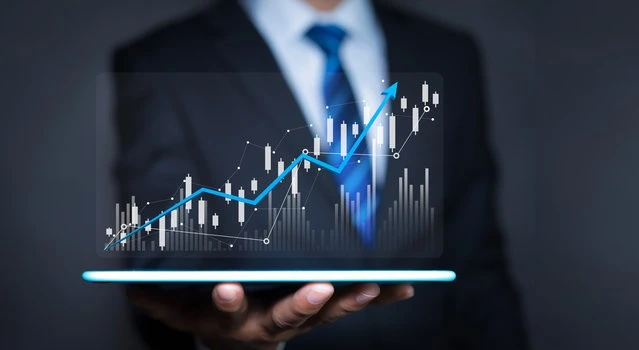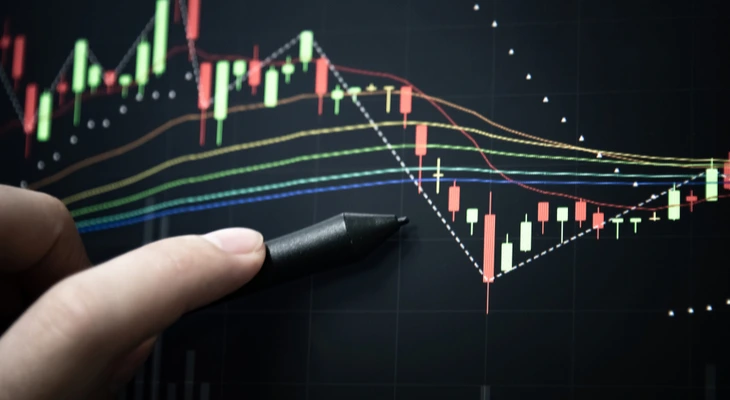Indicators are the fundamental tools for conducting technical analysis. Both traders and the best Forex bots rely on them because they operate based on mathematical calculations, forming patterns and lines on charts that enable traders to make further predictions, timely identify market trends, and react to them.
However, for these predictions to be accurate, you will need to understand how to use trading indicators, how to interpret signals correctly, and, in general, which indicators to choose for a particular strategy you follow in your work.
Must Read: The Basics of Trading You Should Know
Types Of Trading Indicators
Trading indicators are divided into two main categories: oscillators and overlay indicators.
Oscillators help track momentum, allowing traders and the best Forex bots to identify potential price increases based on past data. The most well-known example of an oscillator is the moving average. Oscillators can measure current market conditions and signal how market situations may develop in the near future. They can also display lagging indicators based on historical data for a specific period. Examples of such indicators include MACD and EMA.
Overlay indicators involve techniques where one trendline is superimposed over another, often marked with different colors on charts, enabling traders to determine when to buy or sell assets. The simplest example is analysis based on support and resistance lines.
Selecting The Right Indicators

To choose the best indicator for yourself, it’s important to understand the trading strategy you plan to follow and which tools will assist you best in that strategy. Your chart may contain only candlesticks, candlesticks plus a few indicators, or it may solely display indicator data. Since each trading indicator has its unique features and accuracy level, you need to cross-verify the data using one or several additional indicators for trading.
In this way, you can make well-informed decisions. The main challenge is to avoid overcrowding your chart with too many indicators, as analyzing such a wealth of information can be time-consuming and may cause you to miss potentially profitable opportunities while you are engrossed in analysis.
Similar to how you chose between Metatrader 5 vs. 4, you’ll need to conduct a kind of “competition” and test several options until you settle on the most convenient one.
Using Trend Indicators
Each indicator provides different types of information, for example:
- To identify market trends, you’ll need moving averages and the Parabolic SAR.
- Overbought and oversold conditions can be seen using oscillating indicators like RSI and Stochastics.
- Bollinger Bands can help determine market volatility and price ranges.
To start using indicators in trading, simply add them to your chart by selecting the relevant options on your trading platform. Similarly, you can easily remove indicators from your chart if you don’t use them.
Trading With Indicators: Common Pitfalls And Mistakes
Using indicators may seem like a foolproof way to increase your profits in the market. However, if it were that simple and without any risks, every trader could easily achieve success by relying on a few indicators on their chart. Unfortunately, indicators cannot provide an exact picture, and using many different signals simultaneously can lead to even more confusion.
Common mistakes and pitfalls when using indicators:
- One of the most serious and common mistakes made by beginners is misinterpreting signals. For instance, the crossover of two moving averages can signal a trend reversal, but it could also be a temporary fluctuation. Context is crucial.
- Ignoring Fundamental Analysis: Relying solely on technical analysis without considering factors like economic news, political events, reports, and the introduction of new laws in various regions is a significant mistake. Analyzing this information is also crucial since a central bank statement alone can significantly change the market situation.
- Overloading your chart with too many tools simultaneously can hinder your focus and slow down your work.
- Constantly Searching for the “Holy Grail” Indicator: Always searching for one unique indicator that works better than others and provides the most accurate information can be counterproductive. Instead of scattering your efforts in these searches, it’s better to choose a basic set of tools and gradually learn and test new ones.
To avoid falling into these traps, it’s optimal to use 2-3 indicators and confirm your predictions with fundamental analysis (news, geopolitical events, etc.). This allows you to focus on your chosen strategy and convenient tools, make informed decisions, and not spend too much time preparing for each trade because catching the right moment is as important as using charts correctly.
Summary
Trading indicators allow you to identify profit opportunities and assist in a trader’s daily activities. However, you must remember that none of these tools provides a 100% guarantee of success. That’s why it’s necessary to use multiple indicators to confirm your insights and rely on methods of fundamental analysis.




